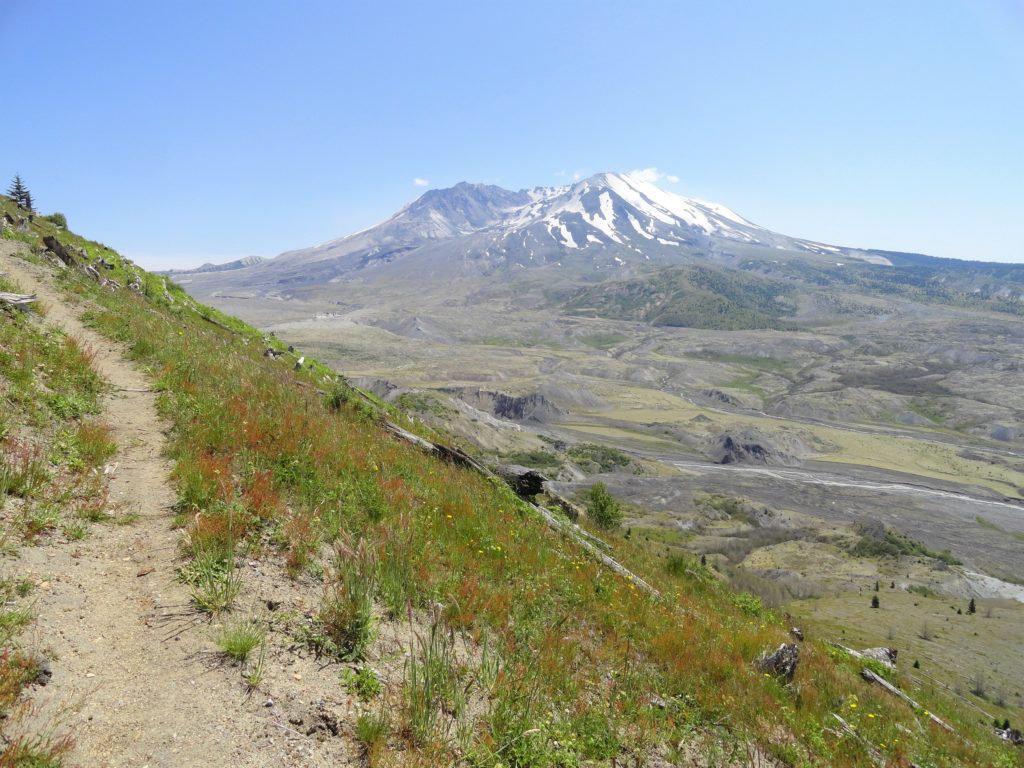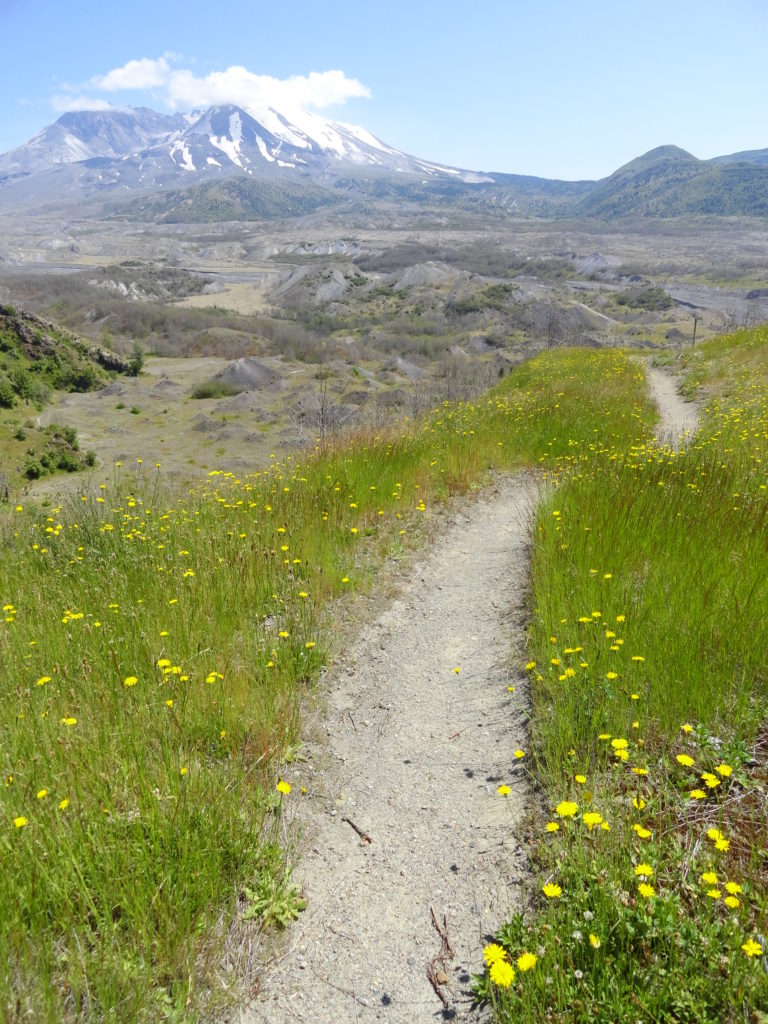Johnston Ridge via the Boundary Trail — Shun the road to this historic and magnificent site

Quick Facts:
Location: Mount St Helens
Land Agency: Mount St Helens National Volcanic Monument
Round Trip: 9.0miles
Elevation Gain: 1875 feet
Contact: Mount St Helens National Volcanic Monument
Green Trails Map: Mount St Helens 332S
Recommended Guidebook: Day Hiking Mount St. Helens by Craig Romano and Aaron Theisen (Mountaineers Books)
Notes: dogs prohibited; off trail travel prohibited, practice leave no trace principles
Access: From Castle Rock (Exit 49 on I-5) follow SR 504 east for 45 miles turning right into the large parking area and trailhead for the Hummocks.
Good to Know: historic, exceptional views exceptional wildflowers, practice Leave No Trace principles
It was 40 years ago when volcanologist David Johnston working with the United State Geological Survey (USGS) transmitted via radio back to the survey’s office; “Vancouver! Vancouver! This is it!” Tragically those famous words were his last. Johnston was positioned at what was known as the Coldwater II observation post when St Helens erupted the morning of May 18th 1980 burying him in pyroclastic debris. Johnston’s backpack was found shortly after the eruption; and pieces of the trailer he spent the night before were found in 1993 during the construction of the highway now leading to the observatory named in his honor. Johnston’s body was never recovered.
The ridge that once housed Coldwater II is now known as Johnston Ridge and it along with the observatory positioned on it offer some of the finest views of the blast zone—particularly St. Helens’ crater. While thousands of folks drive to the observatory, consider hiking to it via the quiet westernmost section of the Boundary Trail.
Start on the popular Hummocks Trail loop soon coming to a junction with the Boundary Trail. Then head off left through and start climbing out of the valley. Enjoy expanding views of Mount St Helens and the sprawling hummocks of the North Fork Toutle River valley. The way attains the ridge crest traversing fields of ferns and flowers. The trail then steeply switchbacks up a shoulder. The North Fork Toutle roars below. The way eases as it enters a grassy slope of resplendent wildflowers, ground-hugging strawberries and regenerating fir forest.

The trail then wraps around the ridge. Mount Adams and Spirit Lake come into view—Coldwater Peak and the Johnston Ridge Observatory, too. Reach the Loowit Viewpoint, a popular pullover for motorists heading to the observatory. Then resume following the Boundary Trail traveling along the south side of Johnston Ridge out of view from paralleling SR 504. Admire flowers swaying in the alpine breezes and silver stumps lining the way. Enjoy too of course; majestic St Helens remaining in full view.
At 4.5 miles reach the massive parking lot for the Johnston Ridge Observatory. If you plan on visiting the observatory you’ll need your NW Forest Pass (good for one visitor) or Interagency Pass (good for up to four adults) or you’ll need to purchase a Monument Pass to enter. If you’ve never visited the observatory, do make it a point to do so at some time. It is full of great displays and is a fitting memorial to a man who was passionate about the science of volcanology. Johnston was one of just a few people who was convinced that St Helens’ eruption would be a lateral blast. At his urging much of the area was closed off which no doubt resulted in far less causalities than what occurred on that fateful day in May of 1980.

For detailed information on this hike and nearly 100 others in and around Mount St. Helens, consult my (co-written with Aaron Theisen) Day Hiking Mount St. Helens (Mountaineers Books). This guide is the most comprehensive book to Mount St. Helens, covering every trail in the monument including winter trails. Pick up your copy today!
For information on where to stay and on other things to do in the Methow Valley, check out Northwest TripFinder

For information on some great programs and events going on at the monument, check out the Mount St. Helens Institute